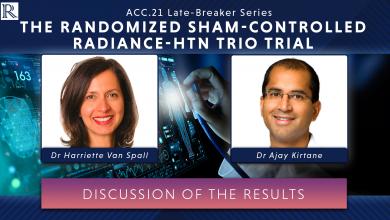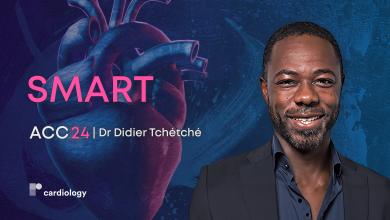Search results
Author(s):
Alfredo Galassi
,
Aaron Grantham
,
David Kandzari
,
et al
Added:
3 years ago
Section A
Techniques for Chronic Total Occlusions Revascularisation
Access Route, Guiding Catheter Selection and Contralateral Injection
The femoral approach is the preferred access route by most operators. However, the radial approach might be chosen because of severe peripheral vascular disease, operator’s preference or for contralateral injection. The guiding principle of access selection is…
View more
Author(s):
Michael Haude
Added:
3 years ago
Myocardial infarction (MI) is the leading cause of death worldwide in both men and women.1 An impending infarction is recognised by ST elevation, which is predominantly the result of an occlusive thrombosis in a coronary artery. An immediate goal in MI is to restore blood flow through the occluded coronary artery. Reperfusion is carried out using primary percutaneous coronary intervention (PCI)…
View more
Author(s):
Martin B Leon
Added:
3 years ago
Since the first treatment of a patient with severe stenosis of the left anterior descending coronary artery using the percutaneous balloon angioplasty technique, pioneered by Andreas Gruentzig more than 25 years ago, the thriving subspeciality of lesser-invasive transcatheter therapeutics has become an important treatment alternative in patients with cardiovascular disease (CVD). Although balloon…
View more
A43 - Percutaneous Impella RP Use for Refractory Right Heart Failure in Adolescents: Results from a…
Author(s):
Athar M Qureshi
,
Mariel E Turner
,
William O’Neill
,
et al
Added:
4 years ago
Article
Author(s):
Giovanni Luigi De Maria
,
Adrian P Banning
Added:
3 years ago
Detection of obstructive disease of the left main coronary artery (LMCA) is relatively unusual in the catheterisation laboratory, as it accounts for approximately 4 % of all coronary angiograms, with isolated LMCA disease observed in only 5–10 % of these cases.1
Intervention to the LMCA is, however, notable compared to the treatment of coronary stenosis elsewhere in the coronary tree. First,…
View more
Author(s):
Simon Kennon
,
Zhan Lim
Added:
3 years ago
The main advantages of transcatheter aortic valve implantation (TAVI) over conventional aortic valve replacement (cAVR) surgery are the avoidance of sternotomy, heart lung bypass and prolonged procedure times. These advantages facilitate early mobilisation and discharge – important both clinically and in terms of resource utilisation. Balanced against this, TAVI is less predictable than cAVR –…
View more
Author(s):
Ajay J Kirtane
,
Harriette Van Spall
Added:
2 years ago
Dr Ajay Kirtane (Columbia University Medical Center, New York, NY, US) joins host, Dr Harriette Van Spall (McMaster University, Hamilton, CA) to discuss the findings from the Randomized Sham-controlled RADIANCE-HTN TRIO Trial.
The studyassessed the efficacy and safety of endovascular ultrasound renal denervation in patients with hypertension resistant to three or more antihypertensive…
View more
Author(s):
Didier Tchétché
Added:
1 week ago
Dr Didier Tchétché (Clinique Pasteur, Toulouse, FR) joins us to discuss findings from the SMART Trial.This prospective, multi-centre, randomised controlled study aims to investigate the valve safety and performance of self expanding as compared to balloon-expandable transcatheter aortic valve implantation (TAVI) in patients with small aortic annuli and severe symptomatic aortic stenosis. At…
View more
Stefan James
Job title: Professor of Cardiology
Author
Author(s):
Nicolas M Van Mieghem
,
Joost Daemen
Added:
5 years ago
Whether you are attending or not, watch Dr Nicolas Van Mieghem and Dr Joost Daemen analyse what to expect from this year's late breaking trials at #ACC19 in the latest instalment of ‘View from the Thoraxcenter’. Topics covered include wearable technology, low-risk TAVI/R, mitraclip, anticoagulation, DAPT, coronary physiology, hypertension and heart failure.
Trials covered in this video:
00:33 -…
View more















 « First
« First